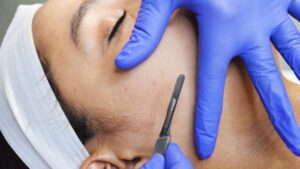
Paw wax is a valuable product for pooches living an active lifestyle, but it’s crucial to understand its appropriate usage. It should not be considered a miraculous solution that can be haphazardly applied to paws.
Similar to any dog-related item, it is essential to utilize paw wax correctly and according to its intended purpose. This article aims at dispelling common misconceptions surrounding the proper application of paw wax and sheds light on the truth behind its usage.
While puppy owners take preventive care, it is equally important to consider being equipped with cheap pet insurance in the least.
Contemplate purchasing a pet plan because pet insurance cost can be much lower than unplanned vet costs you might have to deal with during accidental injuries to paws and other body areas, allergies, particular illnesses, and medical emergencies.
Meanwhile, read this article to learn some common myths surrounding paw wax.
#1 Paw wax is just enough to safeguard your puppy’s paws.
Fact:
It is true that applying paw wax during cold weather creates a temporary barrier that helps prevent ice ball formation and offers considerable protection against the cold; however, there are important considerations to keep in mind.
Unlike dog boots, the paw wax will eventually wear off and does not offer the same level of protection against the natural elements as a pair of booties do. Also, the durability of the wax often depends on the snow conditions and the specific ingredients in the product.
On the flipside, booties can be used for various purposes in various places and are often long-lasting. They excel at shielding paws from road salt and harsh snow.
Consider applying wax to your canine’s paws when the temperature drops, but opt for booties when navigating icy weather and rugged terrains. Hence, it would be a mistake to overlook the importance of using dog boots.
#2 Paw wax causes toxic poisoning in puppies.
Fact:
The notion that paw wax is harmful or toxic to dogs is not convincing. While excessive quantities of any substance can be harmful, commercial paw wax may not contain ingredients that pose a risk to your pets. This is especially true if you opt for natural wax without additives. However, it’s still not advisable for your dog to consume the wax. If your dog happens to lick their newly waxed paws, there’s no need to panic; just talk to your vet.
#3 Regular paw waxing can make a puppy’s feet tough.
Fact:
Paw wax helps condition a puppy’s feet, resulting in softer and supple paws. This enhanced flexibility reduces the likelihood of cracking or splitting when navigating various surfaces.
It’s important to remember that cracked paw pads can cause discomfort to dogs, especially when they step on hot pavement or icy floors. By using a small amount of paw wax, you can help keep their paws pain-free and comfortable.
Paw wax is simply a dog-safe wax item without any therapeutic ingredients. If your dog has a cut paw pad, it is best to seek veterinary attention for proper treatment and care because paw wax doesn’t heal cuts or wounds.
In such a case, you might not need to worry much about the unexpected vet costs if you have bought cheap pet insurance already. Otherwise, contemplate purchasing a policy because pet insurance cost can be more bearable than potentially hefty vet bills during surprise vet visits.







